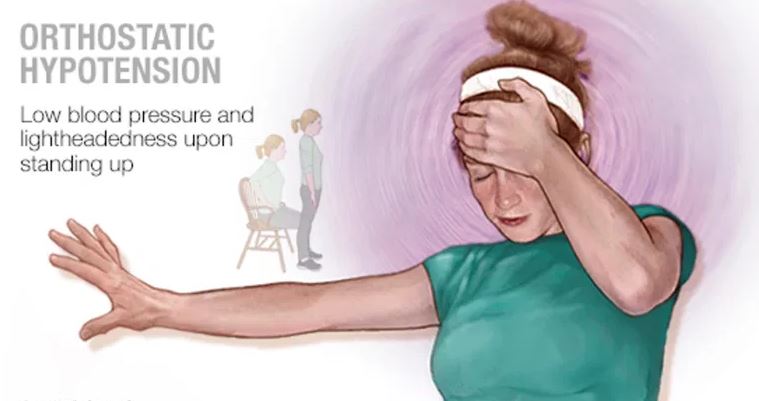Orthostatic Hypotension Overview:
Orthostatic hypotension occurs due to the autonomic nervous system’s response to a change in blood flow to the body. The sympathetic nerves send impulses to the heart, brain, and muscles, giving the body instructions on what to do and when. When the heart beats too fast or at a rate too fast for the body’s metabolism, the blood flow to the legs, arms, or head slows down. In this case the body compensates by increasing heart rate and blood pressure.
Orthostatic hypotension is commonly caused by problems within the lower limbs, including herniated disks or osteoporosis. It can also result from poor circulation due to muscle cramps. The body compensates by increasing blood flow to the legs, which can cause the legs to feel lightheaded, to experience numbness, or tingling, or to become cold and clammy.
HYPERtension
Patients suffering from hypertension also may experience postural hypotension, as increased blood flow can cause blood pooling in the legs, ankles, arms, and brain. Postural hypotension, which is often also referred to as orthostatic hypotension, can also be caused by certain medications, which may either increase blood pressure, reduce blood volume, or both.
Postural Hypotension
Postural hypotension is the medical term for postural hypotension, a medical condition in which one experiences an abnormally low blood pressure caused by abnormal changes in the blood flow to the body. The medical term for postural hypotension is orthostatic hypotension and the symptoms can include dizziness, nausea, vomiting, constipation, diarrhea, dry mouth, headache, tightness in the chest, and weakness.
Postural hypotension is a common health problem with many causes. Diabetics may experience postural hypotension as their body cannot regulate the amount of glucose it needs to function normally. A weak sphincter, which separates the diaphragm and the stomach, may be partially or completely absent. This leads to inadequate absorption of nutrients and toxins, thereby causing excessive fluid retention.
Although most cases of postural hypotension are temporary and self-correct. This does not mean however that the symptoms will go away after a short period. Postural hypotension should be checked immediately, as it can potentially cause life-threatening conditions such as heart attack. If left untreated, it can cause seizures, coma, and even death.
Postural hypotension can occur in people of all ages and body types. It is more common among women than men and is usually hereditary. Postural hypotension can also occur when a person is bedridden due to illness, has kidney or liver disease, has had or is suffering from high blood pressure, or has a weak sphincter.
Blood in the legs may also decrease as a result of dehydration and fluid retention. Excess fluid in the body can cause the heart to contract harder, which causes it to pump harder to pump more blood, thereby causing the veins to enlarge. As the heart contracts, the pressure in the leg drops, which results in postural hypotension.
A person with low blood pressure will often have a light, dizzy feeling in the legs. Sometimes they also may faint. If this occurs, medical treatment is required to restore their blood pressure. Symptoms of low blood pressure include blurred vision, nausea, fatigue, vomiting, and chest pain. Symptoms such as these are common in forms of dysautonomia and postural orthostatic tachycardia syndrome (POTS).
If your blood pressure is elevated, you may notice that your legs feel very warm or cold, and that you may not be able to stand up straight unless you have adequate blood circulation. The feeling of being “warm” in the legs is due to an increased oxygenation process within the body. An elevated blood pressure is known as hypoxia and should be treated immediately.
Available Treatments
There are many treatments available to treat orthostatic hypotension, although some of these methods should only be used to relieve the symptoms of low blood pressure. Anti-seizure drugs may be used in conjunction with medications for other conditions. These anti-seizure drugs can reduce the risk of heart attack or stroke. Antidepressants can also help relieve depression or anxiousness and other emotional stress.
Many patients choose to get help from a doctor who specializes in treating orthostatic hypotension. There are many types of treatment options available. Physical therapy, exercise, and medications are often combined. Some patients have to wait weeks or months to find the right combination to help them improve.


